The middleware strategy
We've used the same digital playbook to help some of the best brands in the world launch and grow in China. A middleware architecture is a central part of that playbook. Here's how.
We got started in 2015, replatforming Starbucks in China. Since then, our team has been helping the likes of Burberry, Hilton and Nike with localizing their digital play for China.
What’s usually a pretty straightforward localization effort in most markets isn’t as simple in China: the Great Firewall makes things slow (if accessible at all), local platforms like WeChat or Tmall look nothing like their global counterparts, and the competition is moving at a pace that is hard to keep up with half way around the world.
We’ve seen a lot of different approaches for building and growing digital products in China. And every time, we end up in pretty much the same spot.
Global vs. Local
Most of our clients’ digital strategy fall in one of two categories:
- Centralized: most things are led from the HQ. This usually means leveraging global infrastructure, systems and development resources. The assumption is that this is more cost efficient and easier to pull off. But it fails to take into account the uniqueness of the Chinese market, it usually leads to subpar customer experiences, poor technical performance and low speed of innovation.
- Delegated: the local team is left to figure out most local digital experiences. This usually means the local team finds local vendors and create its own ecosystem. This usually means higher costs (both CAPEX and OPEX) and diverging digital ecosystems. In most cases, the local team simply doesn’t have the same resources as global and end up seriously limiting their investment.
If you centralize everything, you’re not fast and localized enough. If you delegate everything, you’ll likely not have the resources needed to be competitive.
Additionally, China has been implementing a data protection framework in the past few years with the Data Security Law (“DSL”), the Personal Information Protection Law (“PIPL”) and the Cyber Security Law (“CSL”).
This adds another set of constraints: you can’t store and process personal data on global systems, neither can you cut corners with your local strategy.
A hybrid approach
We want to retain the value of certain global resources: CRM, ERP, financial infrastructure… While at the same time offering digital experiences that are relevant, competitive and as close to our customers as possible, especially on the data front.
The key piece in our strategy is the middleware: a connectivity layer between global and local systems.
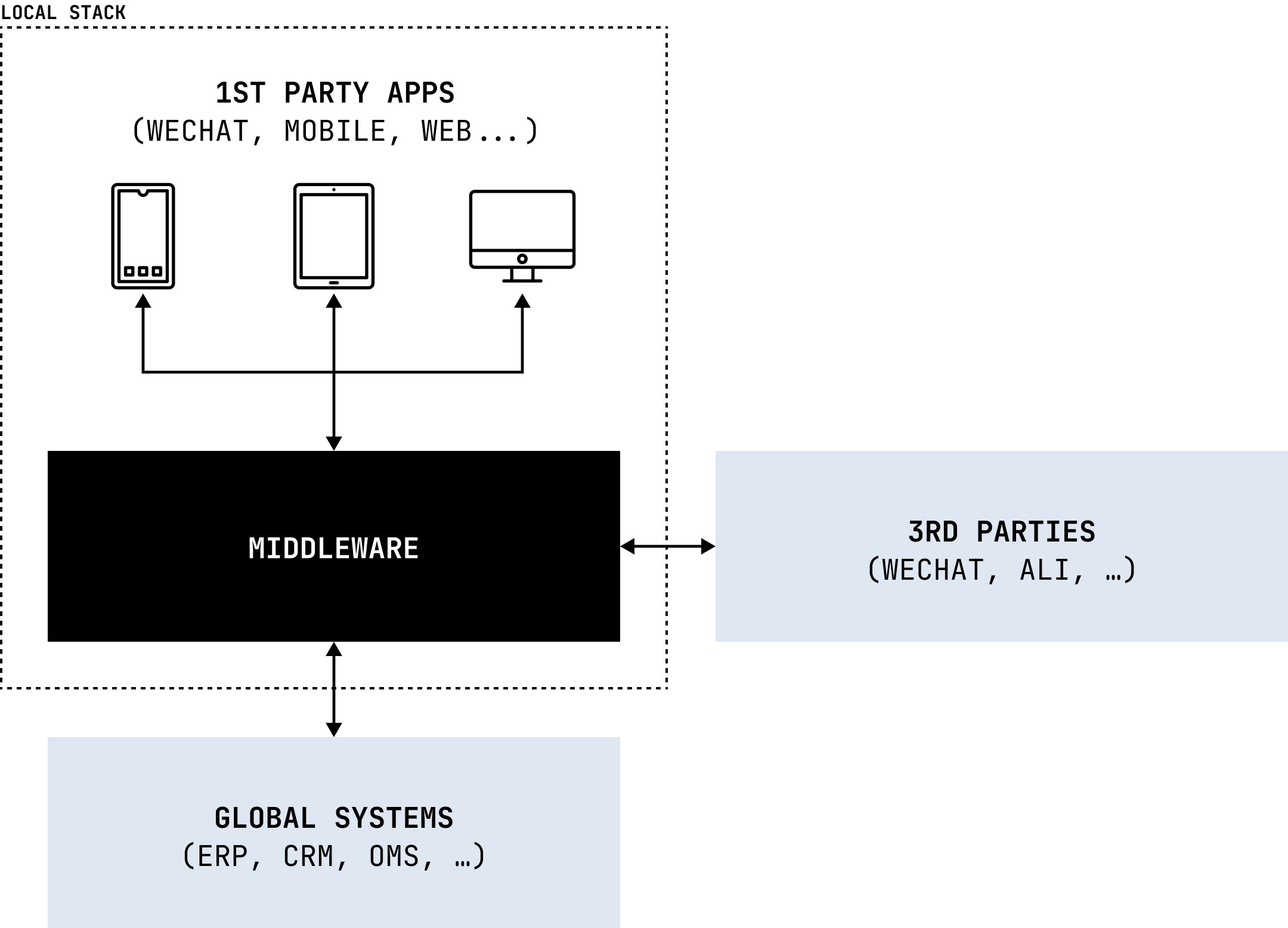
We can create fully localized digital products (website, mobile apps, WeChat mini-programs) that talk to our middleware, mostly a set of local APIs that abstract the complexity of communication with and orchestration of local systems, 3rd parties (e.g. WeChat) or global platforms (e.g. ERP).
We avoid reinventing the wheel completely, enrich global resources with local capabilities and keep the consumer-facing parts as lean and customizable as possible.
Here are a few examples of how we use this architecture to our advantage:
- Offer local API endpoints which is necessary as you’ll need all endpoints to have an ICP license when building local apps (iOS, Android, WeChat mini-program, …), but will also help you with performance.
- Enrich global systems with local capabilities. For example adding WeChat Pay to your checkout flow without having to modify your global OMS or payment gateway.
- Abstract away complex flows for consumer-facing apps, particularly in an environment where you may have local (e.g. WeChat Pay) and global dependencies (e.g. global ERP).
- Scaling enterprise systems. Getting your middleware to scale to hundreds of thousands of concurrent users is very achievable. Getting the same kind of performance from an enterprise solution like SAP is a lot harder (if possible at all).
- Stay compliant with data regulations and global dependencies, keeping PII data local and only sending anonymized data to your global systems.
A case study: Burberry
We’ve worked with Burberry for several years. Their journey with us is a great illustration of how we leverage middleware to help global brands achieve local ambitions.
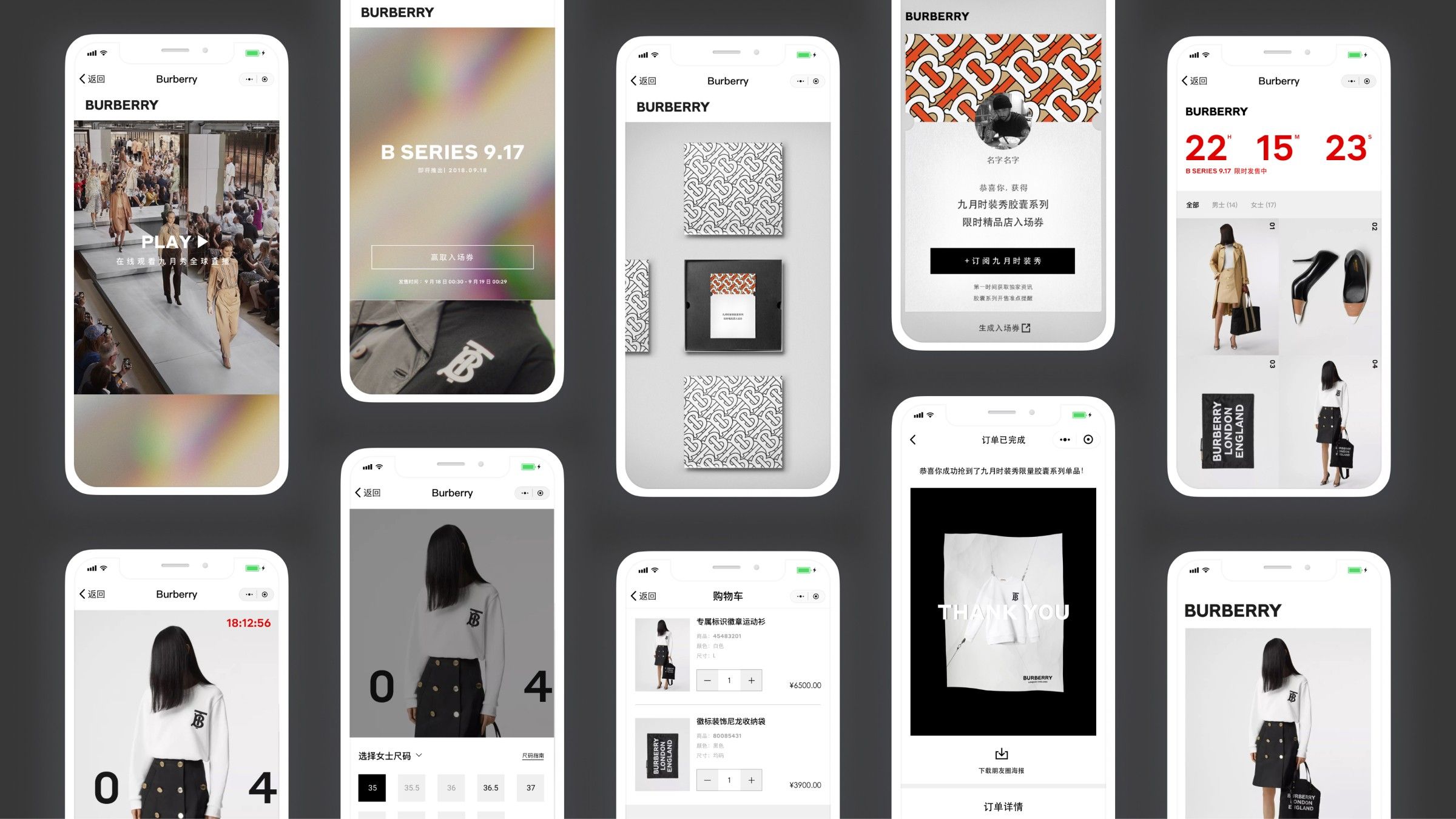
Back in 2018, Burberry was already using WeChat but wanted to take it up to the next stage with a full e-commerce mini-program in time for the Qixi Festival (Chinese Valentine’s Day).
The problem: neither their global e-commerce platform, SAP, nor their tech partner were able to support them on WeChat.
We were brought in with 12 weeks to deliver.
We successfully launched using our off-the-shelf omnichannel middleware, and have been working with them ever since, moving in steps…
Step 1: Standalone build
We built a customer mini-program that connected to our middleware, which effectively took care of OMS, PIM, WMS, IMS as well as Social CRM features. We also forwarded anonymized data to Google Analytics in real-time. We launched with a fully functional experience that ran separately from the rest of the global stack.

Step 2: Integrating with global
In a second phase, we started integrating with the global Order Management System. (”OMS”) and Inventory Management System (“IMS”), allowing them to manage their inventory and leveraging the long tail of integrations and automation they had around their existing OMS, while extending the capabilities of these systems (e.g. WeChat Pay).
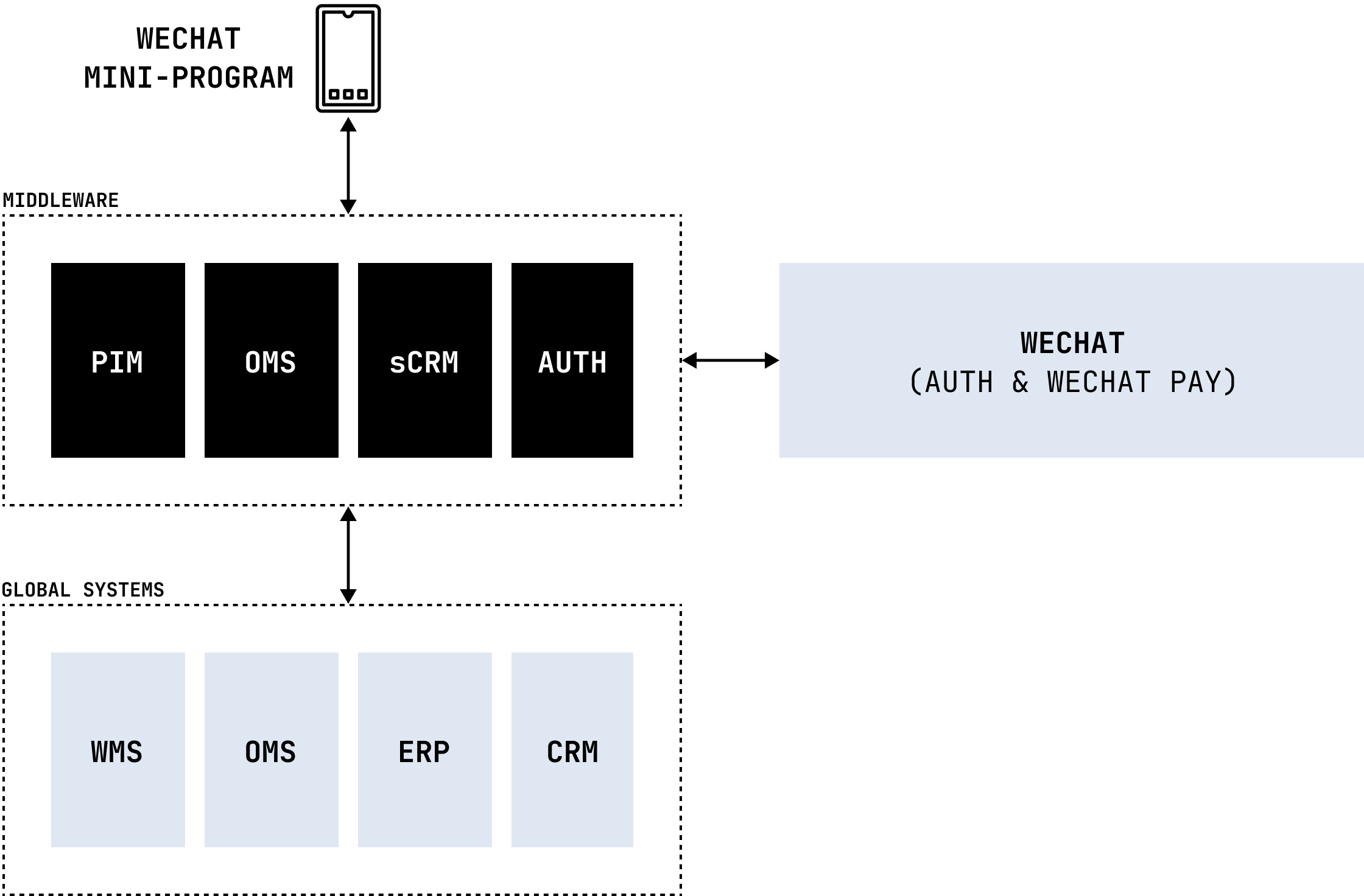
Step 3: Integrating with 3rd parties
As we grew the WeChat channel, the need for a dedicated Social CRM led us to replacing our own minimalist component for a local SaaS platform. We simply swapped both systems, integrating with that 3rd party in the same way we did with global systems.
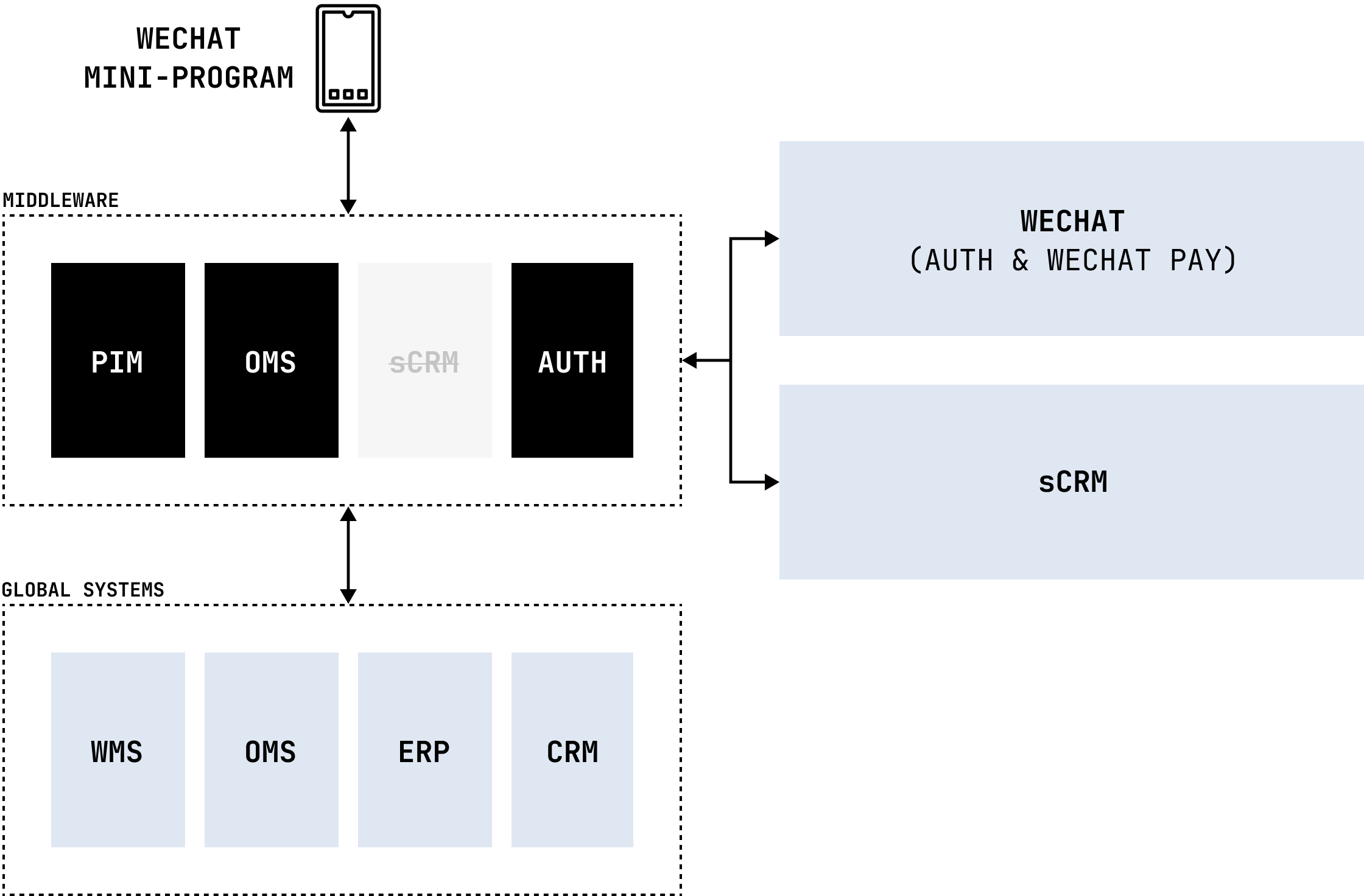
Step 4: Expanding with local features
At this stage we had the ability to expand our WeChat mini-program with features coming from the global platforms, or simply expand our middleware to add purely local features. This is what we did by adding, for example, the gifting program.
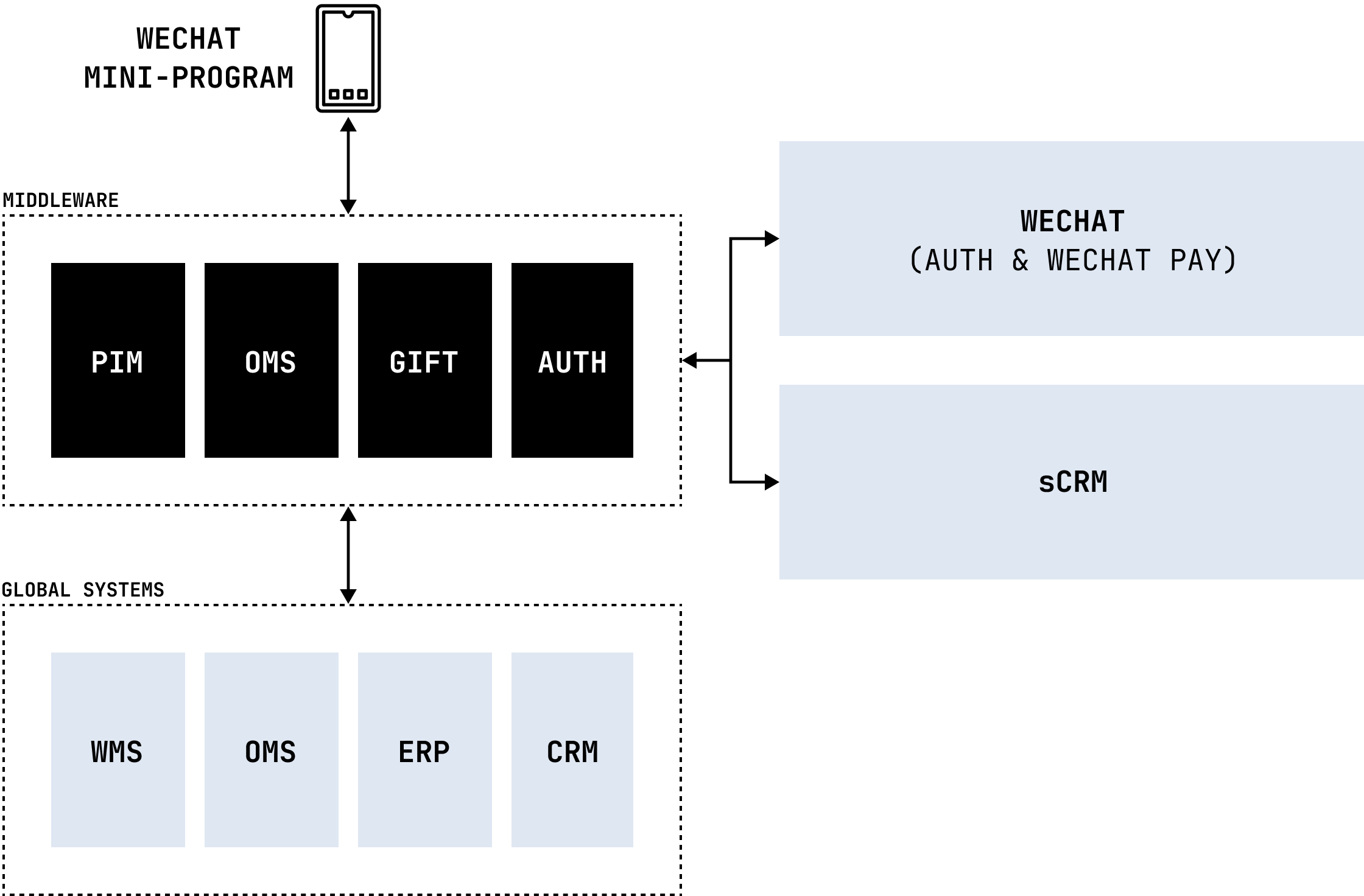
Build or buy? In-house or not?
While you could leverage some existing tools or platforms to help you get off the ground, you will most likely need to do some amount bespoke work, especially if you’re in an enterprise context.
This work will need to be done, at least in part, locally: there’s too much that could be lost in translation when dealing with China. You’ll also need a local team to support on the data and compliance fronts.
The question really is whether you should build that team yourself, or work with an external partner:
- In-house team: you’ll have a chance to build all of the knowledge internally and retain full control of your solution. But don’t expect this to be easy or cheap: you’ll need to recruit, train and manage a large team of experts. Most importantly, you’ll need to absorb the cost of building the expertise of building and supporting such a platform.
- External partner: you’ll have less control over the solution and may need a higher CAPEX, but will get to leverage a team that already has all the knowledge and can get you there safely and quickly., without any need for trial and error.
Once again, we have a hybrid approach.
Over the past few years, we’ve captured most of what we’ve learned helping our clients into an off-the-shelf solution named “OMNI”. It provides us with a scalable middleware architecture and a set of boilerplate components for common use cases: identity, user management, order management, payment gateway, product management…
We usually focus first on customization and integration, and later help our client take full ownership of the solution we’ve built.
What’s next
We’ve seen this approach work at scale, across virtually every digital channel in China and for a wide range of brands and use cases: e-commerce with Tiffany, membership with Starbucks, booking with Hilton…
COVID, along with the latest round of personal data regulations, in particular PIPL, have only accelerated the adoption of a “China for China” play for most of our clients.
This middleware architecture has been an integral part of our “Omnichannel Blueprint”, a playbook we’ve used with almost every single one of our clients since 2015. This blueprint includes guidance for other important technical bricks: identity management, customer data, multichannel content management…
But this is rarely the most strategic part of the digital acceleration effort we support our clients with. Organizational changes, both in terms of teams and processes, is where most of our impactful work happen.
If you’re interested in these topics, leave us your email and we’ll let you know once we’re ready to release our “Omnichannel Blueprint” ebook.